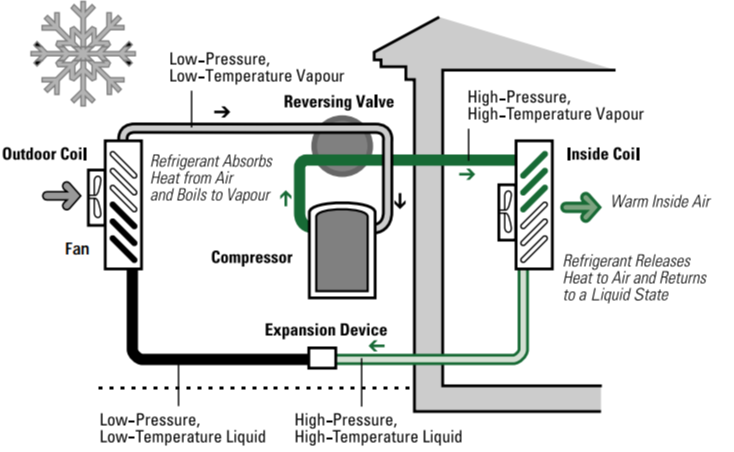Heat Pumps - Air and Ground
LISTEN...
Modern heat pump technology is fast becoming the system of choice for new and retrofit construction, both for it's excellent efficiency and it's ability to provide heating AND cooling to a building.

The technology that heat pumps use is very much like the cooling system on your refrigerator - heat is drawn from the air and pumped out of the appliance to keep the interior cool.
Air Source Heat Pumps (ASHP) use similar mechanisms to draw heat from air outside (for heating) or from inside (for cooling).
Ground Source Heat Pumps (GSHP) have the same type of heating and cooling function, except they are drawing heat from the consistent temperature underground.
In both cases, there will be a refrigerant liquid, such as freon or glycol, that is run throughout the heat pump unit to enhance the collection of heat energy.
Heat pumps are sized in "tons", but this is not the weight of the machine. According to ASHRAE, measuring capacity in "tons" comes from air conditioning, and is the amount of heat energy it would take to melt 1 ton of ice in 24 hours. Natural Resources Canada and Energy Star go further to define heat pump capacity as one "ton" equals 3.5 kilowatts or 12,000 Btu's.
Important considerations for heat pumps:
- System sizing for new and existing buildings will rely on the effectiveness of the building envelope for thermal and air tight performance. Energy modelling and/or an energy audit will help HVAC designers to properly size the heat pump.
- Electric heat pumps offer excellent rates of efficiency - they provide more energy to heating and cooling than it takes to actually run the machine.
- Cold Climate Air Source Heat Pumps are specifically made for conditions where outside temperatures will be below freezing during cold winters. Talk to your energy advisor and your HVAC technician about the model you may use in your climate zone.
- Ground Source Heat Pumps involve digging into the ground to create a "loop" of pipes that collects or gives off heat energy to the ground. These pipes may be arranged horizontally over a wide field OR vertically, going into the ground like a well pipe.
